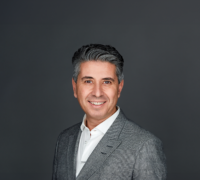Perform the LEGO sweet spot search
This exercise will help you to identify, expand and deepen your sweet spot.
Once upon a time, LEGO paused to analyze three of its business lines (clothing, shop and theme parks). The firm found that it did not have a sweet spot it could protect among the three. The action taken was to phase out their clothing and theme park business lines.
Plastic building bricks, they concluded, were their sweet spot. But this area itself was both shrinking and getting shallower, and they were losing customers and profits in tandem. LEGO’s challenge therefore lay in expanding and deepening their sweet spot.
To do the same for your firm, ask yourself what challenges you have in expanding your sweet spot. These are top-line questions.
Next, ask what challenges you have in terms of deepening this sweet spot. These are bottom-line concerns.
Above all, remember that the strategic positioning of your business today (identifying your sweet spot) will put you in a position to look at alternative ways to expand and deepen it. That way you will add value to your firm, your customers and society at large.
How often should you do this exercise?
Good strategy is not done once a year. You always should be thinking strategically and with agility in how you operate and use resources. Agility may require divestment, rather than investment, to free up the resources needed to deepen and expand your sweet spot. Too many companies hesitate to kill their “sacred cows” until it’s too late.
The sweet spot is more commonly called the firm’s unique selling point, or distinctive competitive competence. George Tovstiga calls it the firm’s “unique competing space” in his book, Strategy in Practice: A Practitioner’s Guide to Strategic Thinking, 3rd edition, Wiley 2015.
Professor Stéphane J.G. Girod’s forthcoming book, Resetting Management, explores business agility more widely. It is available at Amazon.
To develop your strategic thinking, or create a strategy for your business or organization, consider IMD’s online program Strategic Thinking, starting 11 October 2021.







